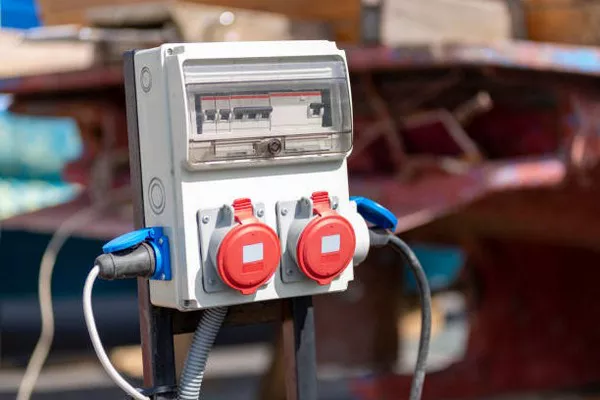Flow measurement is crucial across various industries, from oil and gas to pharmaceuticals and water treatment. Among the plethora of flow measurement devices available, vortex flow meters stand out for their reliability, accuracy, and versatility. These instruments utilize the principle of the von Kármán effect to measure flow rates in a wide range of applications. This article aims to delve into the intricate workings of vortex flow meters, elucidating their operational principles, advantages, limitations, and applications.
Operational Principles
1. The von Kármán Effect
At the heart of vortex flow meter operation lies the von Kármán effect, a phenomenon discovered by the Hungarian physicist Theodore von Kármán in the early 20th century. When a fluid flows past a bluff body, such as a cylinder or a sphere, it creates alternating vortices on either side of the body. These vortices form in a regular pattern, with the frequency of vortex shedding being directly proportional to the fluid velocity and inversely proportional to the characteristic dimension of the bluff body.
2. Sensor Design
Vortex flow meters typically consist of a bluff body, sensor, and transmitter. The bluff body, often cylindrical or triangular in shape, is placed perpendicular to the flow stream. As the fluid flows past the bluff body, vortices are shed alternately from either side of the body. The sensor, usually piezoelectric or piezoresistive, detects the pressure fluctuations caused by the vortices. These pressure fluctuations are then converted into an electrical signal proportional to the fluid velocity. The transmitter processes this signal to calculate the flow rate and outputs it in a suitable format.
Advantages of Vortex Flow Meters
1. Wide Rangeability
Vortex flow meters offer excellent rangeability, typically spanning a ratio of 20:1 or more between the maximum and minimum flow rates. This versatility makes them suitable for applications with fluctuating flow rates or where precise measurement across a wide range is required.
2. Low Maintenance
Compared to other flow measurement devices such as orifice plates or turbine meters, vortex flow meters require minimal maintenance. With no moving parts in contact with the fluid stream, they are less prone to wear and tear, resulting in lower maintenance costs and increased operational uptime.
3. High Accuracy
Vortex flow meters are renowned for their accuracy, particularly in applications where stable flow conditions prevail. With advancements in sensor technology and signal processing algorithms, modern vortex flow meters can achieve accuracies of up to 1% of the measured value, rivaling more complex and expensive flow measurement technologies.
4. Wide Applicability
One of the key advantages of vortex flow meters is their suitability for a wide range of fluids, including liquids, gases, and steam. Additionally, they can accommodate varying fluid temperatures and pressures, making them ideal for diverse industrial applications ranging from chemical processing to HVAC systems.
Limitations and Considerations
1. Turbulent Flow Requirements
Vortex flow meters operate based on the principle of vortex shedding, which necessitates turbulent flow conditions. Consequently, they may not provide accurate measurements in laminar flow regimes, requiring upstream piping configurations or flow conditioners to induce turbulence.
2. Sensitivity to Installation Conditions
The accuracy and performance of vortex flow meters are sensitive to installation conditions, particularly upstream and downstream piping configurations. Disturbances such as bends, valves, or elbows in the piping can affect the formation and stability of vortices, leading to inaccuracies in flow measurement.
3. Limited Low-Flow Sensitivity
While vortex flow meters offer excellent rangeability, they may have limited sensitivity at low flow rates, particularly in applications where precise measurement of low flows is critical. In such scenarios, alternative flow measurement technologies with higher turndown ratios may be more suitable.
4. Fluid Density and Viscosity Effects
The density and viscosity of the fluid being measured can influence the performance of vortex flow meters. Variations in fluid density or viscosity may affect the frequency and amplitude of vortex shedding, leading to inaccuracies in flow measurement. Calibration adjustments or specialized sensor designs may be necessary to compensate for these effects.
Applications of Vortex Flow Meters
1. Petrochemical Industry
In the petrochemical industry, vortex flow meters find extensive use in measuring the flow of various fluids, including crude oil, refined products, and natural gas. Their robust construction, wide rangeability, and compatibility with hazardous environments make them well-suited for applications such as custody transfer, blending, and process control.
2. Water and Wastewater Treatment
Vortex flow meters play a crucial role in water and wastewater treatment facilities for monitoring flow rates in pipelines, distribution networks, and treatment processes. Their ability to withstand harsh environmental conditions, along with their high accuracy and low maintenance requirements, makes them indispensable for ensuring efficient operation and regulatory compliance.
3. HVAC Systems
Heating, ventilation, and air conditioning (HVAC) systems utilize vortex flow meters for measuring the flow of air, water, or refrigerants in ducts, pipes, and chillers. By accurately monitoring flow rates, HVAC systems can optimize energy efficiency, maintain indoor comfort levels, and facilitate predictive maintenance.
4. Food and Beverage Industry
In the food and beverage industry, vortex flow meters are employed for measuring the flow of liquids such as water, juices, and dairy products during processing, bottling, and packaging operations. Their hygienic design, sanitary fittings, and accurate measurement capabilities ensure product quality, compliance with regulatory standards, and efficient production processes.
Conclusion
Vortex flow meters offer a reliable, accurate, and versatile solution for flow measurement across various industries and applications. By harnessing the von Kármán effect, these instruments provide precise measurements of fluid flow rates, enabling process optimization, regulatory compliance, and cost savings. Despite their limitations, advancements in sensor technology and signal processing continue to enhance the performance and applicability of vortex flow meters, ensuring their continued relevance in the field of flow measurement.

